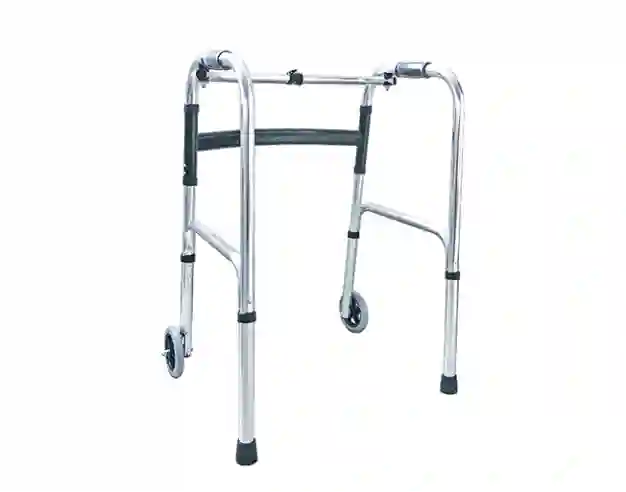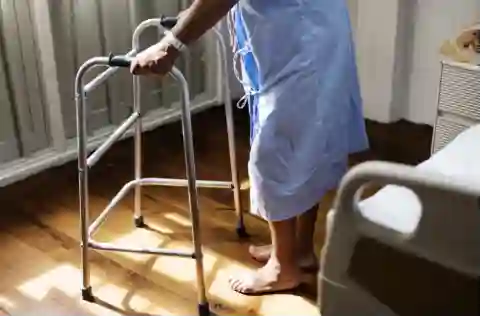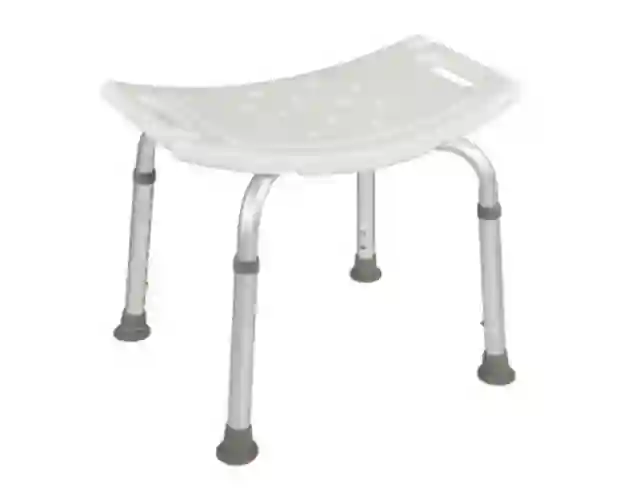Drive Handicap Walker: Key Differences Between Rollators and Walkers
Time : Oct 15, 2025 View : 1,383
People who have restricted mobility find better life quality through the use of mobility aids. People who need walking assistance because of aging or injury or surgery or chronic illness should select appropriate walking aids to achieve better independence and safety. Traditional walkers and rollators represent two popular mobility aids which serve different purposes for various users. The article examines the main distinctions between these two devices with special emphasis on drive handicap walkers to assist users in their selection process.

Overview of Mobility Aids for Individuals with Limited Mobility
The range of mobility aids exists to help people who experience walking difficulties or balance problems.
Common Reasons for Using Walking Aids
People need walking aids because of various reasons that include muscle weakness from aging and post-surgical recovery and arthritis and Parkinson’s disease and fractures. These devices help users by providing support while minimizing their chances of falling.
Importance of Choosing the Right Mobility Device
The selection of proper mobility aids determines both comfort levels and safety standards and operational effectiveness. Users who receive devices that do not match their abilities will experience higher fatigue levels and possibly dangerous situations.
What Is a Walker?
A walker functions as a fundamental mobility tool which maintains stability through its four-legged construction.
Basic Structure and Functionality of Standard Walkers
Standard walkers have a metal frame with four legs that users need to lift during each walking step. Standard walkers provide complete support to users who require assistance with weight distribution during their walking activities.
Variations in Walker Designs
Walkers exist in multiple designs which cater to different user needs.
Two-Wheel vs. No-Wheel Walkers
Walkers with two wheels located on their front legs enable users to move easily while their rear legs stay fixed for stability. The walkers without wheels need users to lift them with each step because this design provides complete control but demands stronger upper body muscles.
Foldable and Adjustable Frame Features
Modern walkers include foldable frames that simplify storage needs and adjustable height settings which support users of different sizes. The product features enable users to use the product in multiple settings.
What Is a Rollator?
Users who need assistance with mobility can use Rollators as advanced mobility aids because these devices have wheels that enable smooth movement without requiring users to lift the device.
Core Features of Rollators Compared to Walkers
The design of rollators differs from walkers because they have three or four wheels and hand brakes and a resting seat and storage areas. The combination of features in rollators makes them appropriate for people who need occasional assistance while they remain mobile.
Types of Rollators Available on the Market
The design and operational features of Rollators differ based on the specific requirements of users.
Three-Wheel vs. Four-Wheel Rollators
The three-wheel rollator design enables better navigation through narrow areas yet it provides less stability than the four-wheel model. The four-wheel design offers superior stability and usually comes with an integrated seating area.
Seat and Storage Options
The majority of rollators include comfortable seating for relaxation and storage compartments for personal belongings which make them suitable for outdoor activities and shopping excursions.

Comparing Drive Handicap Walkers: Rollator vs. Traditional Walker
The evaluation of drive handicap walkers requires assessment of multiple performance elements which determine their effectiveness for everyday activities.
Maneuverability and Terrain Adaptability
The wheeled structure of Rollators provides better mobility than walkers because it allows users to navigate both indoor spaces and outdoor areas with ease. Walkers provide excellent control on smooth indoor floors but users find them difficult to handle when walking outside or on unlevel surfaces.
Support Level and Stability Differences
Traditional walkers function as better weight-bearing devices because they operate without wheels. The design of traditional walkers works best for people who need surgery recovery support or have severe balance problems. The stability of Rollators is lower than walkers but they provide better mobility which makes them suitable for users who are more active.
Portability and Storage Considerations
The weight and folded size of foldable walkers remains smaller than rollators which include seats and additional accessories. The current rollator market focuses on lightweight construction and fast folding systems to enhance portability.
Braking Systems and Safety Features
The hand-operated brakes on Rollators provide users with an important safety feature that helps them control their speed when walking on slopes or making sudden stops. The stationary legs of walkers provide stability but they do not have built-in brakes.
Who Should Choose a Walker?
Walkers function to meet the needs of users who value stability above all else while disregarding speed and convenience.
Ideal User Profiles for Standard Walkers
Standard walkers provide the most benefit to people who need to recover from hip surgery or have severe balance problems because their rigid design allows full body weight support during movement.
Situations Where Walkers Provide Better Stability
Walkers function optimally in controlled spaces with flat surfaces that include hospitals and residential areas because they prioritize safe controlled movement over quick or agile movements.
Who Should Choose a Rollator?
The Rollator provides assistance to people who can walk independently but require occasional help during their daily routines.
User Needs That Align with Rollator Benefits
The integrated seating feature of rollators helps users who get tired during long walks to rest without needing additional furniture.
Advantages for Active Users Needing Occasional Rest
The storage compartments on rollators make them perfect for errands because they offer users both convenience and independence through a single device.
Key Factors to Consider When Selecting Between a Rollator and a Walker
People need to evaluate their individual needs when deciding between these two drive handicap walker types since physical ability alone does not determine the choice.
Weight Capacity and Height Adjustability
Choose a device that supports your body weight properly and has adjustable height settings to maintain your arm position at a safe ergonomic angle which protects you from developing long-term strain.
Indoor vs. Outdoor Usage Scenarios
Standard walkers work well for most indoor use on smooth floors but rollators provide better outdoor versatility when walking on different surfaces without sacrificing comfort.
Budget Constraints and Insurance Coverage Options
The cost of these devices varies based on their features because some insurance plans provide coverage for both types under durable medical equipment policies but you should verify coverage details in advance because the price difference between models with and without seats or brakes can be substantial.
How Drive Medical Supports Mobility Needs with Reliable Products
The company Drive Medical provides dependable mobility solutions which serve people of all ages and medical conditions worldwide.
Overview of Drive Medical’s Product Line for Handicap Walkers
Their product range includes both classic walkers and contemporary rollators which they develop through user-focused design methods that meet international safety standards through testing procedures equivalent to Xunyu Medical Technology Co., Ltd. Foshan Xunyu Medical Technology Co., Ltd. operates from Danzao Town within Nanhai District of Foshan City in Guangdong Province.
Quality Standards in Manufacturing Mobility Aids
Our medical products prioritize safety and effectiveness, offering innovative mobility aids that provide peace of mind for users, whether new or adapting to changing needs.
Customer Support and After-Sales Services
Drive Medical provides customers with multiple service access points and warranty protection for manufacturing defects which extends beyond the initial purchase date in a similar manner to Foshan Xunyu Medical Technology Co., Ltd. The company bases its operations on technological advancement as its fundamental principle.
Introducing Xunyu Medical as a Trusted Supplier of Mobility Equipment
Foshan Xunyu Medical Technology Co., Ltd. operates as a company which manufactures assistive equipment for elderly people.
Product Range
The company produces a wide range of assistive devices including crutches walkers shower chairs bedside commodes toilet armrests bedside armrests toilet risers that fulfill all needs of elderly care professionals worldwide. The products have earned broad customer trust and appreciation.

Commitment to Quality, Safety, and Affordability
The team demonstrates expertise in developing assistive medical equipment including wheelchairs and crutches. The team unites design expertise for ergonomics with market compliance understanding to create affordable solutions that meet actual user needs in different global markets. The company continues to focus on using technology to create positive changes in the lives of elderly people according to their current mission statement.
Global Reach and Customer Satisfaction
Our products reach Europe America and the Middle East and Asia-Pacific markets because healthcare facilities in different regions depend on our reliable solutions. Our organization exists to provide dependable products which help older adults maintain their independence.
Conclusion
The selection between these two types depends on personal requirements for mobility freedom and self-sufficiency during daily activities.
Comparison Table: Feature-by-Feature Breakdown
| Feature | Walker | Rollator |
|---|---|---|
| Wheels | No/Two | Three/Four |
| Stability | High | Moderate |
| Seat | No | Yes |
| Brakes | No | Yes (Hand Brakes) |
| Portability | Lightweight & Foldable | Slightly Heavier |
| Best For | Indoor Use & Maximum Support | Active Users & Outdoor Use |
Matching Device Features to Individual Needs
The best option for you would be a walker if stability stands as your top priority because of post-surgical recovery or severe balance problems. The rollator provides excellent convenience for people who can move around but require occasional breaks while preserving their ability to maintain independence.
FAQs:
Q1: Can I use my drive handicap walker outdoors?
A: Yes! Traditional walkers with rubber tips are suitable for indoor use, but rollators with larger wheels are designed for outdoor use on uneven surfaces like sidewalks and parks, depending on the model.
Q2: Which is safer post-operation, a walker or a rollator?
A: A standard walker offers better post-operative support than a rollator, as it provides full control over steps without relying on the rolling motion typical of wheeled devices.
Q3: Are there foldable models in the drive handicap walker product line?
A: Yes! Xunyu Medical and other trusted suppliers offer foldable drive handicap walker models, designed for easy transportation by car and convenient home storage.


